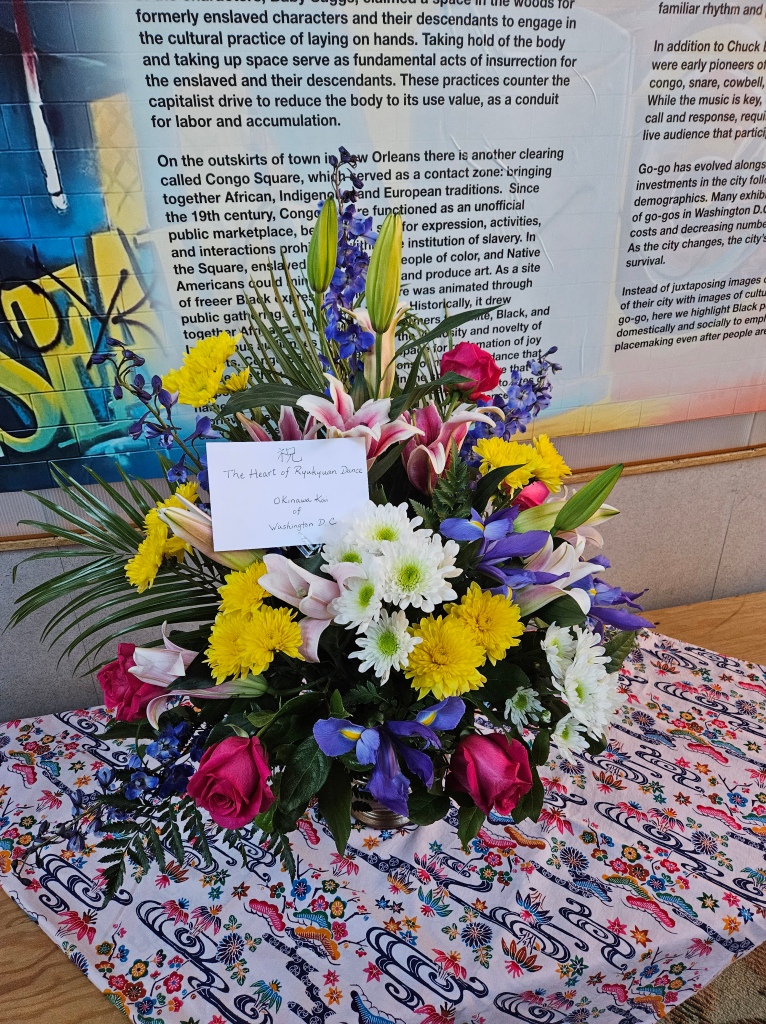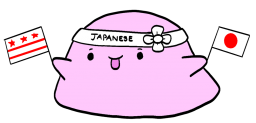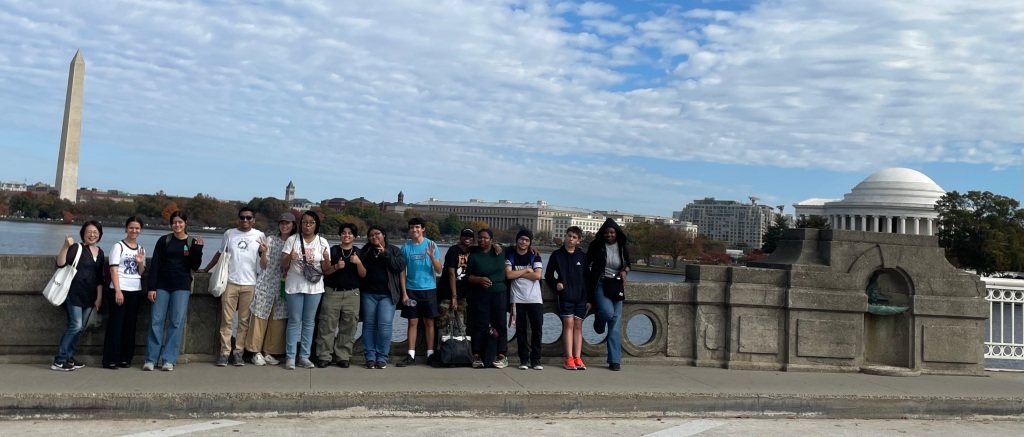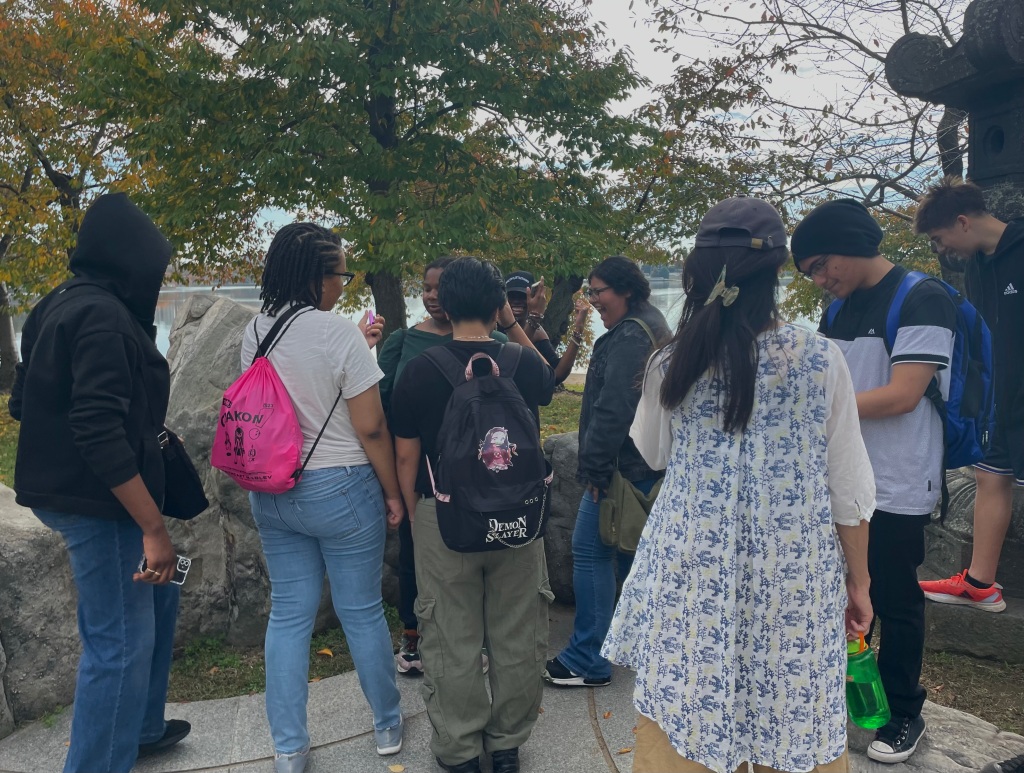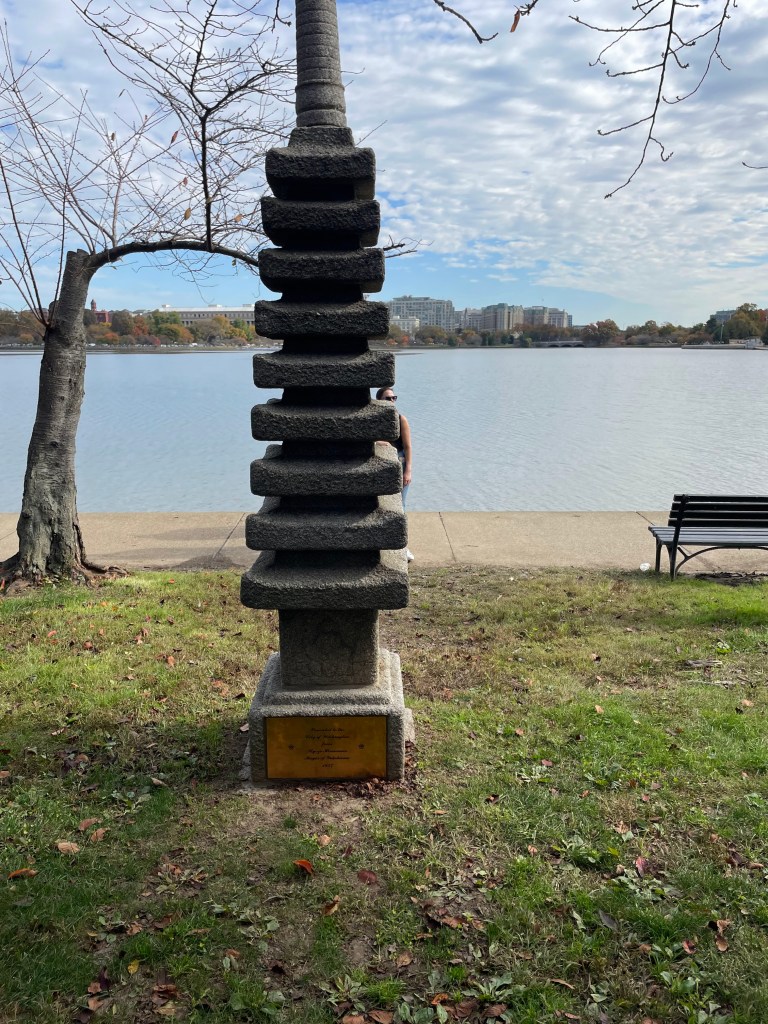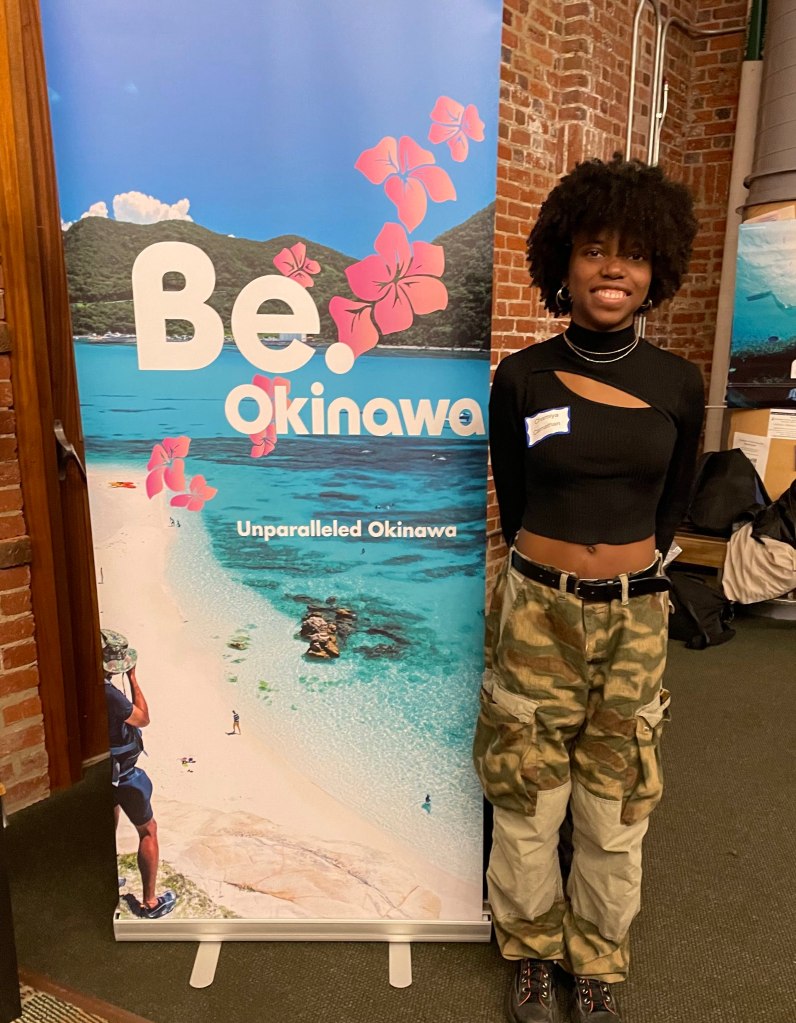
By Chamiya Carnathan
On November 18, 2023, Sally Schwartz and I attended the “The Heart of Ryukyuan Dance” performance which was located at Georgetown University’s Davis Performing Arts Center. Five masters of Ryukyuan dance from Hawaii, San Francisco, Los Angeles, and Washington, D.C. were featured in the performance. The five Ryukyuan Dance Masters from various academies came together for the first time to share Ryukyuan culture and art. Sally and I were generously invited by the DC Okinawa Prefectural Office to both the performance and the reception afterwards, and I greatly appreciated the event that I attended.
To provide some context about the significance of the Ryukyuan dance, Ryukyu is the ancient (and original) name for the Okinawa region of Japan. From its founding in the 15th century until its incorporation into Japan in the 19th century, Okinawa fostered its history and culture as the autonomous “Kingdom of Ryukyu” for 450 years.
I didn’t know what to expect when I attended the event but it was way better than I expected. In all, ten dances told stories that included cultural tapestries, love stories, and much more. Every dance was distinct in its own right, whether it was a lively, upbeat dance or a slow dance. I loved watching the dances and connecting the dance moves to the story itself. The dance that sticks in my memory the most is called “Kanayo Tenkawa River,” and it tells the story of two lovers who chose to exchange vows by the Tenkawa River. The fact that the dance included props made it something I truly adored. The dancers used a piece of cloth to show that they were interconnected through their love.

The dancers’ demonstration of a move used in Okinawan dances to the audience was my favorite part of the performance. They then invited the audience to join in on the dance, which I thought was a great way to involve the audience. We were able to learn a cultural dance move and take it with us home. My other favorite event was the decision to combine GoGo music — Washington DC’s official music — to Ryukuyan dancing. I would never have imagined that the two cultures could coexist, so it was really fascinating to watch. Although the dance and music are very different from one another, they nevertheless blended incredibly well.
I greatly appreciate the dancers and everyone involved for creating a wonderful experience. I loved every ounce of it and I would love to attend another event like this again.
